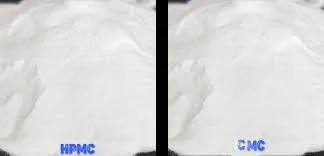
Aug . 11, 2024 12:40 Back to list
Exploring the Applications and Benefits of Hydroxyethyl Cellulose in Various Industries
What is Hydroxyethyl Cellulose Used For?
Hydroxyethyl Cellulose (HEC) is a water-soluble, non-ionic polymer that is derived from cellulose, a natural polymer which forms the structural component of the cell walls in plants. Due to its unique chemical properties, HEC finds a diverse range of applications across various industries, most notably in the fields of pharmaceuticals, cosmetics, food, and construction.
What is Hydroxyethyl Cellulose Used For?
In the pharmaceutical sector, hydroxyethyl cellulose serves multiple functions. It is utilized as a binder in tablet formulations, where it helps to hold the active ingredients together, ensuring that they are released properly in the body. HEC is also employed in controlled-release drug delivery systems, where its gel-forming properties help to regulate the rate at which the drug is released into the bloodstream. This can be particularly advantageous for patients requiring consistent medication levels over extended time periods. Furthermore, HEC can function as a lubricant in various medical applications, such as eye drops or gels, providing relief for dry eyes by retaining moisture and ensuring comfort.
what is hydroxyethyl cellulose used for

The food industry also benefits from the properties of hydroxyethyl cellulose. It is often used as a food thickener, stabilizer, and emulsifier in various products, including sauces, dressings, and bakery items. HEC helps improve the texture and mouthfeel of food products while enhancing their shelf life by preventing the separation of ingredients. Its contribution to maintaining the consistent quality of food products is particularly valuable, as it ensures that consumers enjoy a uniform sensory experience with every purchase.
In construction, hydroxyethyl cellulose is frequently used as an additive in joint compounds, paints, and tile adhesives. Its water retention properties aid in maintaining workability and extending the drying time of mixtures, allowing for improved application and performance. HEC in cement-based materials can enhance adhesion, resistance to cracking, and longevity. Its role in construction materials speaks to its versatility and importance in enhancing product efficacy and durability.
Moreover, the non-toxic and biodegradable nature of hydroxyethyl cellulose aligns well with the growing demand for environmentally friendly products. As consumers become increasingly aware of the potential impact of synthetic chemicals on their health and the planet, HEC provides an appealing alternative, being derived from natural cellulose.
In conclusion, hydroxyethyl cellulose is a multifunctional polymer that serves a wide variety of roles across several industries. From enhancing the texture and stability of personal care products to playing a crucial role in pharmaceuticals, food, and construction, HEC is integral to numerous applications. Its versatility, combined with its natural origins, positions hydroxyethyl cellulose as a valuable ingredient in the ongoing pursuit of quality in consumer products and industrial applications alike.
-
Versatile Hpmc Uses in Different Industries
NewsJun.19,2025
-
Redispersible Powder's Role in Enhancing Durability of Construction Products
NewsJun.19,2025
-
Hydroxyethyl Cellulose Applications Driving Green Industrial Processes
NewsJun.19,2025
-
Exploring Different Redispersible Polymer Powder
NewsJun.19,2025
-
Choosing the Right Mortar Bonding Agent
NewsJun.19,2025
-
Applications and Significance of China Hpmc in Modern Industries
NewsJun.19,2025







